Ever sat on a train and just listened?
In Japan, it’s gatan goton (がたんごとん) — a rhythmic, metallic clatter that marks a quiet journey across the countryside or through a city tunnel.
But how do other languages express the sound of trains and locomotives?
Let’s take a ride through the world of onomatopoeia and find out!
What Does an Actual Train Sound Like?
First of all, listen to the actual sound carefully.
Japanese: がたんごとん (Gatan Goton)
In Japan, the most iconic train sound is がたんごとん — gatan goton.
It mimics the repeating metal rhythm as the train wheels strike the joints between rails.
This sound carries a sense of motion, nostalgia, and sometimes quiet reflection.

Example
でんしゃのおとは、がたんごとんです。
(Densha no oto wa gatan goton desu.)
(The sound of the train is gatan goton.)
How Do You Say It?
English: Choo Choo / Clickety-Clack
In English, old-fashioned steam trains are often associated with “choo choo”, the puffing of steam.
But for modern trains on tracks, clickety-clack captures the rhythmic clatter of wheels.
Sometimes it’s shortened to just clack clack.
Example
The sound of the train is clickety-clack.
How Do You Say It?
Chinese: 哐当哐当 (Kuāngdāng Kuāngdāng)
In Mandarin Chinese, the sound of a train is often written as 哐当哐当 (kuāngdāng kuāngdāng).
It represents the heavy clunking noise of metal on metal, like the pounding of wheels over tracks.
Example
火车的声音是哐当哐当。
(Huǒchē de shēngyīn shì kuāngdāng kuāngdāng.)
(The sound of the train is kuāngdāng kuāngdāng.)
How Do You Say It?
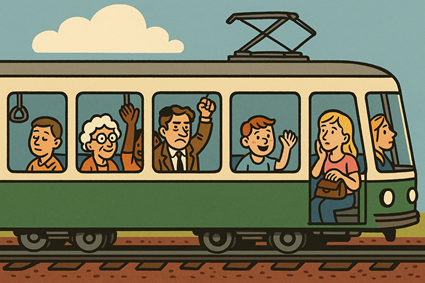
German: Tuff Tuff / Ratter Ratter
In German, tuff tuff is often used to imitate the sound of a steam train, especially in children’s books and songs — similar to “choo choo.”
But for the rhythmic clatter of a modern train running on tracks, the sound is sometimes expressed as ratter ratter, capturing the repeating metallic noise of wheels over rail joints.
Example
Der Zug macht ratter ratter, wenn er fährt.
(The train goes ratter ratter as it moves.)
How Do You Say It?
Korean: 덜컹덜컹 (Deolkeong Deolkeong)
Korean uses 덜컹덜컹 (deolkeong deolkeong) to describe the rattling or jostling sound of a train.
It can also express vibrations or bumpiness in general.
Example
기차 소리는 덜컹덜컹입니다.
(Gicha sorineun deolkeong deolkeong imnida.)
(The sound of the train is deolkeong deolkeong.)
How Do You Say It?
Italian: Ciuf Ciuf / Tac Tac
In Italian, ciuf ciuf (like “choo choo”) is often used for steam trains, especially in children’s stories.
Tac tac can mimic the repetitive clicking of wheels over tracks.
Example
Il suono del treno è tac tac.
(The sound of the train is tac tac.)
How Do You Say It?
French: Tchou Tchou / Tagada Tagada
French also uses tchou tchou for steam trains, like a playful whistle.
But the rhythmic sound of a moving train is sometimes expressed as tagada tagada, capturing the bumpy cadence of movement.
Example
Le bruit du train, c’est tagada tagada.
(The sound of the train is tagada tagada.)
How Do You Say It?
Hindi — छुक छुक (Chuk Chuk)
In Hindi, trains often go छुक छुक (chuk chuk) — again mimicking steam engines, especially in children’s rhymes.
It’s a sound loaded with rhythm and nostalgia.
Example
ट्रेन की आवाज़ छुक छुक है।
(Train ki aawaaz chuk chuk hai.)
(The sound of the train is chuk chuk.)
How Do You Say It?
Final Thoughts
Even though the trains might sound similar in real life, each language hears them differently.
From gatan goton to kuāngdāng, deolkeong, and tagada, these onomatopoeia reflect not only sounds, but culture and memory.
Which version do you hear when the train rolls by?

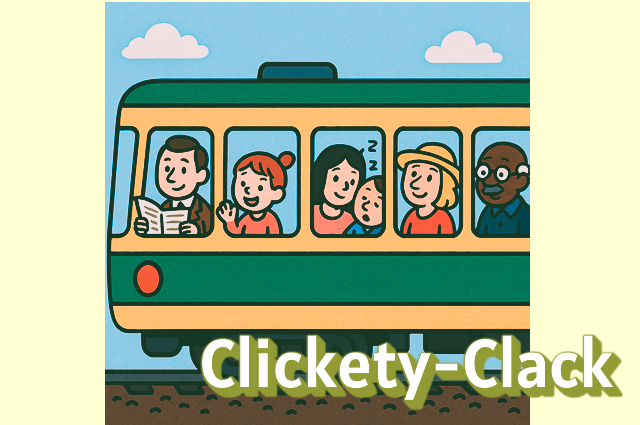



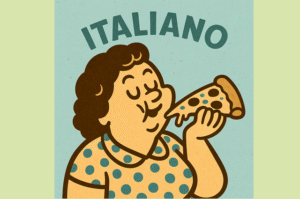
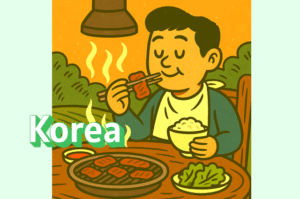
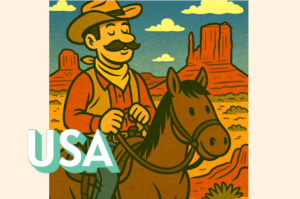
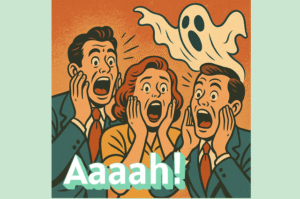
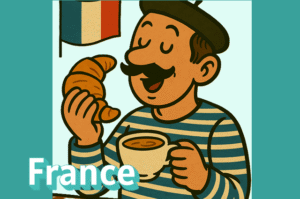
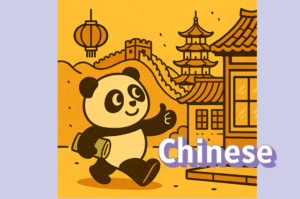
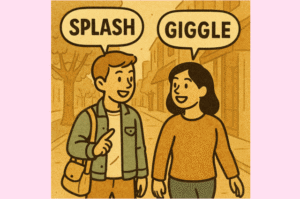
Comments